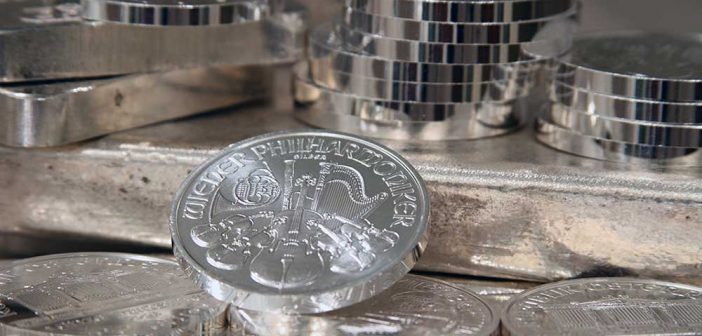The Mirae Asset Nifty Metal ETF provides investors exposure to the Nifty Metal Index, a sector-specific index representing leading metal and mining companies listed on the National Stock Exchange (NSE) of India. The ETF seeks to replicate the performance of the Nifty Metal Index, offering a way for investors to gain sectoral exposure in a single security.
Key Highlights
- Sector-Specific Exposure: The Nifty Metal Index comprises companies primarily involved in metal production, mining, and related industries. These companies deal with commodities such as steel, aluminum, copper, and zinc. Prominent constituents include names like Tata Steel, Hindalco, and Vedanta.
- Diversification within the Metals Sector: While the ETF concentrates on a specific sector, it still provides diversification by spreading investment across various large-cap companies within the metals and mining sector. This diversification helps reduce company-specific risks while still benefiting from sector trends.
- Low-Cost Structure: ETFs are known for their cost-efficiency, and the Mirae Asset Nifty Metal ETF is no exception. The expense ratio is competitive, making it an attractive option for investors looking for low-cost exposure to the metal industry. Lower expense ratios generally translate into higher potential returns over the long term as management fees don’t eat into gains.
- Liquidity and Flexibility: The ETF is traded on the NSE, allowing investors to buy and sell units during market hours just like stocks. This provides liquidity and flexibility, making it easier for retail investors to enter and exit positions at their convenience.
- Sectoral Volatility: The metal sector is inherently cyclical and sensitive to global economic trends, commodity prices, and industrial demand. The ETF can experience significant volatility based on external factors like raw material costs, international trade policies, and macroeconomic conditions. Investors must be comfortable with the potential ups and downs that come with investing in this sector.
Performance Analysis
- Historical Returns: Historically, the metal sector has seen fluctuating performance based on commodity cycles and demand from key industries such as infrastructure, automobile manufacturing, and construction. Recent trends in global infrastructure development and the increasing demand for metals used in electric vehicle production have provided a boost to the sector.
- Recent Trends: Over the last few years, the metals sector has performed strongly due to increased industrial activity post-pandemic, a surge in global infrastructure projects, and the renewable energy transition requiring more metal resources. However, market corrections and policy changes related to import duties or export restrictions can impact the sector’s momentum.
- Dividend Yield: Several companies in the Nifty Metal Index, such as Coal India, tend to offer attractive dividend yields. This can provide an additional income stream for investors, particularly those looking for income-generating assets. However, dividend income may fluctuate based on the financial performance of individual companies.
Risks and Challenges
- Commodity Price Risk: The metals sector is highly dependent on the global prices of commodities like steel, copper, and aluminum. A significant drop in commodity prices can lead to reduced profitability for companies in the index and, consequently, lower returns for ETF investors.
- Cyclicality: The metals industry is highly cyclical. During periods of economic growth, the demand for metals increases, leading to higher revenues and profits for companies. Conversely, during economic downturns, demand for these commodities often weakens, causing earnings to slump and impacting stock prices.
- Global Economic Dependence: Given that many metals are exported or tied to global supply chains, geopolitical tensions, tariffs, and global economic slowdowns can adversely affect the performance of metal companies.
- Government Policies: Policies related to mining, production quotas, tariffs on imported metals, and environmental regulations could significantly impact metal companies. Any unfavorable changes in policies could have a direct effect on the profitability of these companies and the ETF’s overall performance.
Investment Suitability
- Ideal for Sector-Savvy Investors: This ETF is best suited for investors with a clear understanding of sectoral trends and an appetite for the inherent volatility of the metals market. Those with a long-term outlook who believe in the potential growth of the metal industry may find this ETF an attractive investment.
- Diversification Tool: For investors with broad market portfolios, adding a sectoral ETF like Mirae Asset Nifty Metal can offer diversification benefits. It can act as a tactical allocation for those who wish to gain exposure to the metal sector while maintaining a broader diversified portfolio.
- Long-Term Holders: Given the cyclical nature of the metals sector, investors looking to hold the ETF over a longer horizon, such as 3-5 years, are more likely to benefit from growth in commodity demand, industrial expansion, and global infrastructure developments.
Conclusion: Is Mirae Asset Nifty Metal ETF a Good Buy?
The Mirae Asset Nifty Metal ETF is a compelling option for investors who want sector-specific exposure to India’s metal and mining industries. It provides an affordable and flexible way to invest in companies poised to benefit from the demand for raw materials in infrastructure projects, electric vehicles, and global industrial activities.
However, its inherent risks – such as commodity price volatility, sector cyclicality, and exposure to global economic trends – mean that this ETF is more suited for investors with a higher risk tolerance. Those looking to ride the cyclical upswing of the metals sector may find significant value in this ETF, especially as industrial demand grows. But for the conservative or risk-averse investor, the ETF’s volatility could be a concern.
Investors should consider balancing this sectoral ETF within a diversified portfolio to mitigate risk while capitalizing on the potential upside the metals industry offers.






